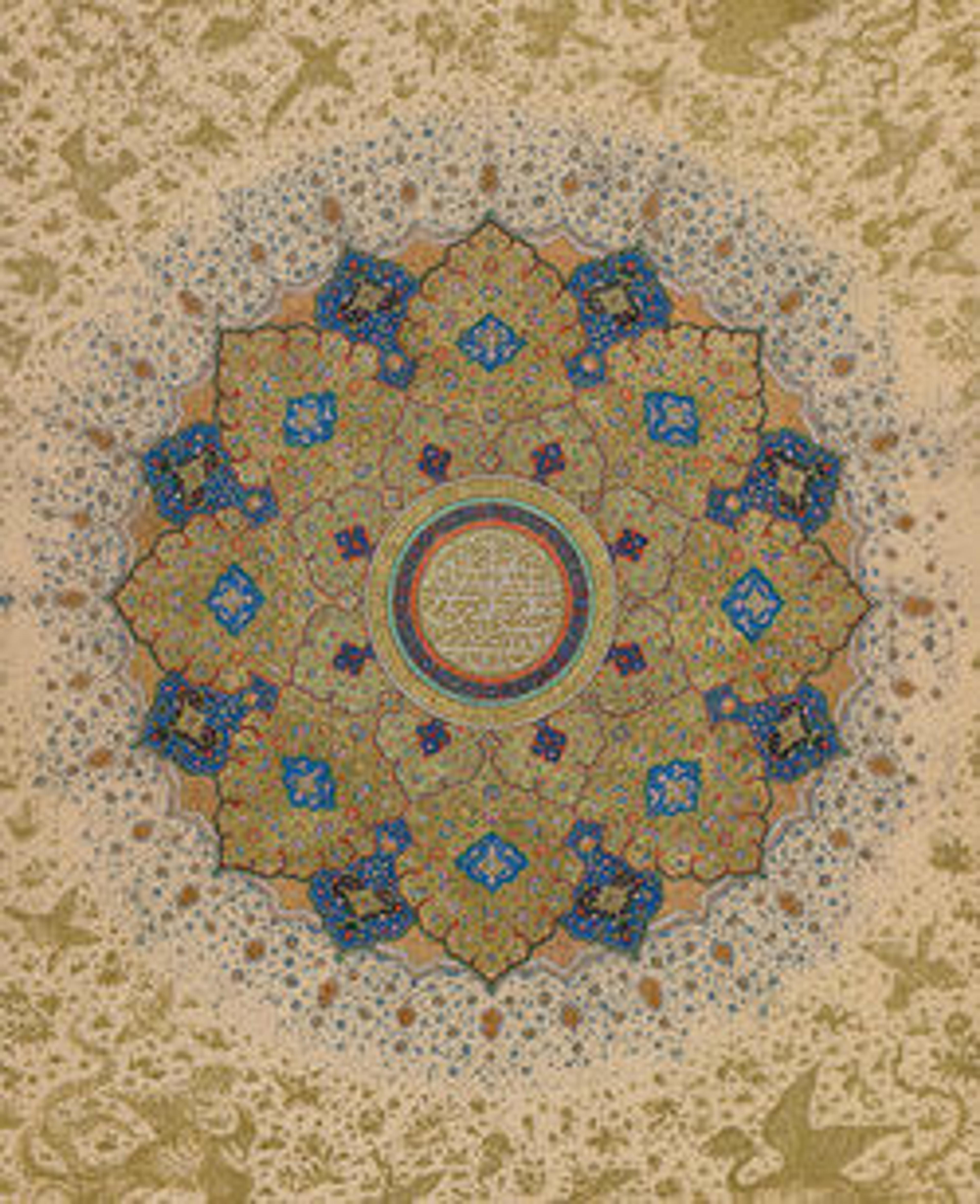Hanging (Arid)
One of the rarest and finest examples of Moroccan embroidery, this wall hanging (arid) displays the most remarkable achievement of a Chefchaouene needlewoman's skills. The arids were used to cover the surrounding areas of interior arches in matching sets. Worked in plaited stitch, these panels contain geometric motifs based on tracery, arabesques, stars, rectangles, and diamonds, all closely associated with Andalusian tilework, woodcarving, and early textiles. Said to have been used as an altar curtain in a Nestorian church in Jerusalem, this particular piece is certainly conversant with a variety of cultures and civilizations. The importance of embroidery in Moroccan life can be illustrated by the ceremony held for every infant girl at the age of four months, when the baby was placed in a chair and given a needle and thimble along with some silk thread to hold, in anticipation of a life blessed with the needle's art.
Artwork Details
- Title: Hanging (Arid)
- Date: ca. 1800
- Geography: Attributed to Morocco, Chefchaouen
- Medium: Linen, silk; plain weave, embroidered
- Dimensions: Textile:
L. 106 1/2 in. (270.5 cm)
W. 31 3/4 in. (80.6 cm)
Mount:
H. 109 3/4 in. (278.8 cm)
W. 36 1/8 in. (91.8 cm)
D. 1 3/4 in. (4.4 cm)
Wt. 67 lbs. (30.4 kg) - Classification: Textiles-Embroidered
- Credit Line: Purchase, Everfast Fabrics Inc. Gift, 1970
- Object Number: 1970.272
- Curatorial Department: Islamic Art
More Artwork
Research Resources
The Met provides unparalleled resources for research and welcomes an international community of students and scholars. The Met's Open Access API is where creators and researchers can connect to the The Met collection. Open Access data and public domain images are available for unrestricted commercial and noncommercial use without permission or fee.
To request images under copyright and other restrictions, please use this Image Request form.
Feedback
We continue to research and examine historical and cultural context for objects in The Met collection. If you have comments or questions about this object record, please complete and submit this form. The Museum looks forward to receiving your comments.
